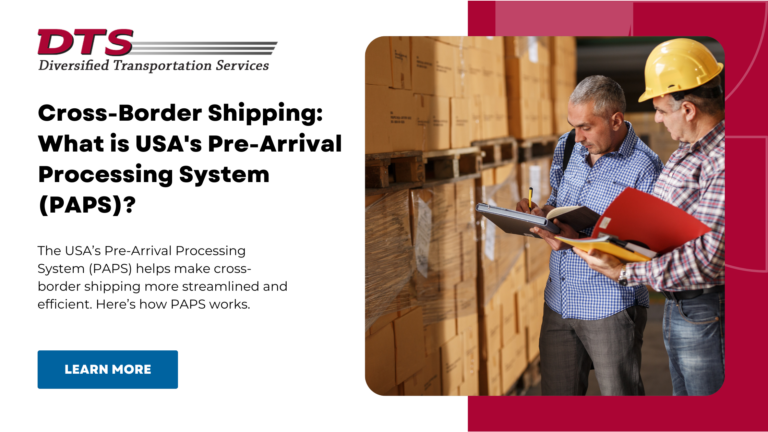
How can you utilize PAPS for cross-border shipping, and what does the process involve?
If you plan to import goods into or through the US, the Pre-Arrival Processing System (PAPS) can help you avoid unexpected disruptions, which is crucial for minimizing the risk of delays and staying on track.
Let’s take a closer look at the Pre-Arrival Processing System to help you understand why it could help your business.
What is the Pre-Arrival Processing System (PAPS)?
You can think of PAPS as the US counterpart to Canada’s Pre-Arrival Review System (PARS), which we’ve covered before. The customs clearance system known as the Pre-Arrival Processing System (PAPS) aims to streamline the process of importing goods into the US. It does this by granting pre-clearance to shipments considered to be low-risk. That helps reduce the time carriers wait to receive clearance and eases congestion at border crossings into the US.
The Pre-Arrival Processing System integrates with the US’s Automated Commercial Environment (ACE). This is the primary system importers, brokers, and other trade partners use to submit data about commercial shipments before they reach the US.
The Trade Act of 2002 made it mandatory to send electronic information about each shipment entering the country via US customs to Customs and Border Protection (CBP) before it arrives at the border. It’s only available to carriers that have already received CBP approval and a US Standard Carrier Alpha Code (SCAC).
Different transportation methods use different systems to submit this shipment information, and all cross-border freight coming into the US by truck uses the PAPS system.
Understanding how PAPS works for cross-border shipping is vital if your company wants to import goods into the US smoothly.
Here are the key steps in the process:
Only carriers approved by CBP can use the Pre-Arrival Processing System. Approved carriers need to apply for a US Standard Carrier Alpha Code through the National Motor Freight Traffic Association (NMFTA).
Carriers assign PAPS numbers and barcodes to each shipment upon pick up. After picking up the shipment and assigning a PAPS number, the carrier will enter the shipment details into ACE online and designate it as a PAPS shipment.
Carriers enter information into ACE’s eManifest system. Submit this information at least one hour before the relevant shipment arrives at the US border:
The information entered into the eManifest system includes details about:
Carriers will double-check that the details submitted match the PAPS number provided because any mistakes could lead to delays.
Customs officers will review the information submitted about the cross-border shipment. Based on their review, they will decide whether the shipment can be pre-cleared or if further examination is needed once it arrives in the US.
The PAPS barcode will be scanned once a shipment reaches the US border.
Next, one of the following two things will happen:
The second outcome could significantly disrupt your shipping operations, especially if goods are denied from entering the US.
The Pre-Arrival Processing System can be complicated to navigate, particularly for anyone importing goods into the US for the first time. Some businesses may find it overwhelming as it necessitates a significant understanding of shipping and customs protocols.
That’s why it’s best to work with logistics professionals and a freight transportation company. A reputable team from a respectable company like DTS has the skills and hands-on experience to offer reliable guidance.
Contact us today for help and advice!
Whether you're a company looking to improve one facet of your supply chain, your entire supply chain, or simply looking for a transportation and logistics consultation, we can help.